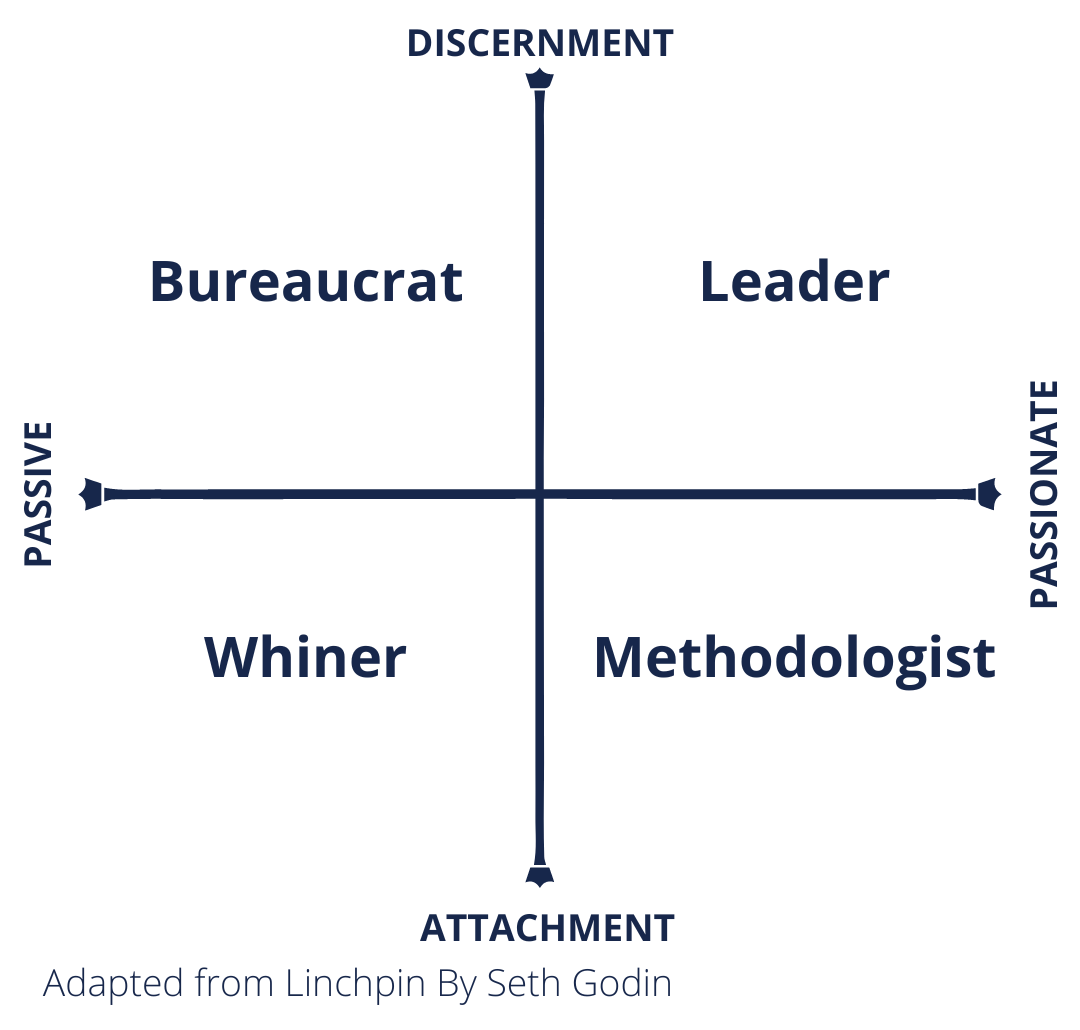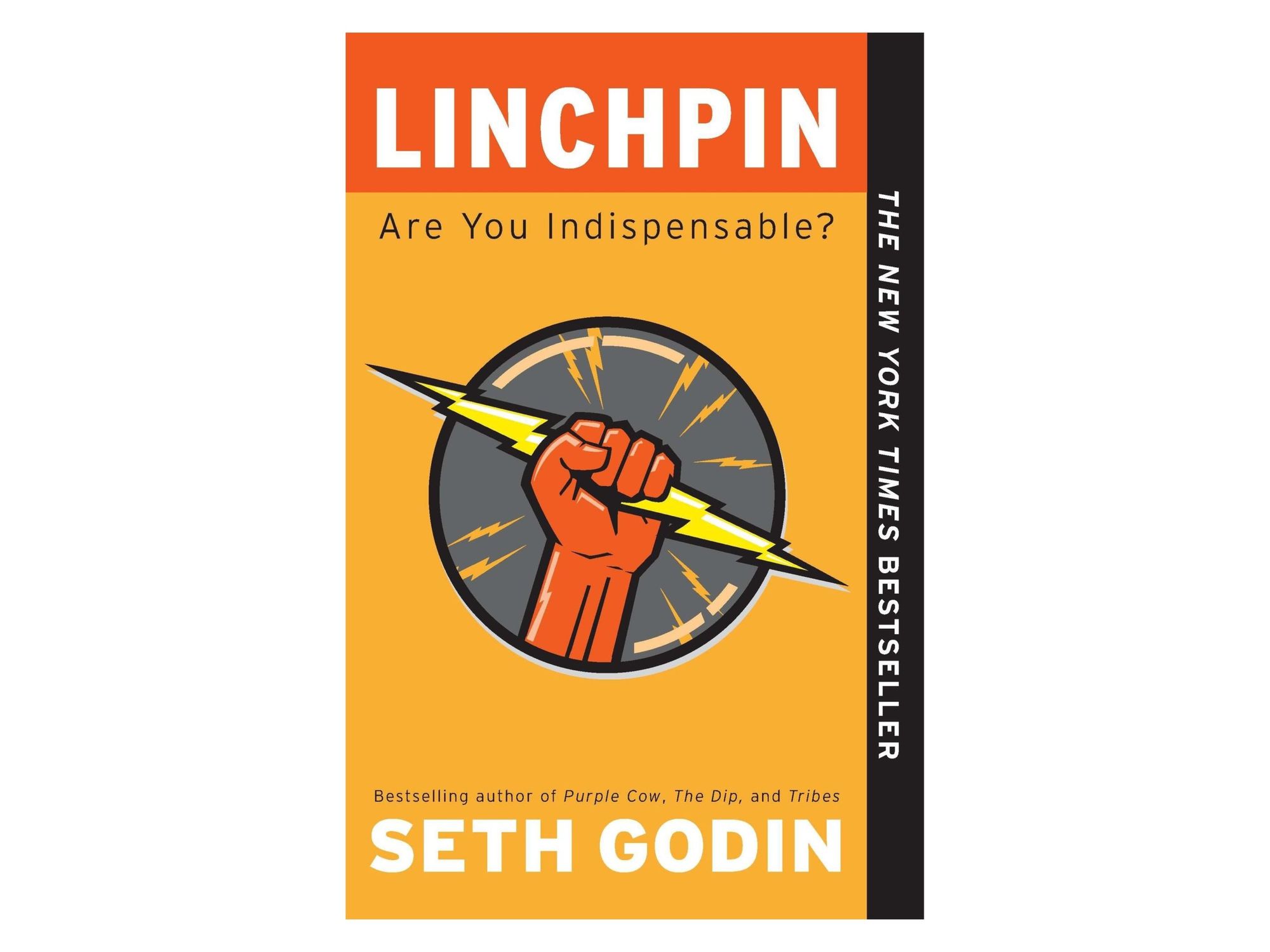Seth Godin’s "Linchpin” Book Review: Applying it to project management

In 2010, Seth Godin’s book, “Linchpin”, became the foundation for the Creator economy.
If you follow any creator, on any platform, Godin’s thoughts on being a creator are always part of the atmosphere. It's obvious that his influence throughout the greater creator economy is quite widespread.
But his thinking has implications not only for Creators, but for project management as well.
I want to outline three concepts you can take from this book and apply it to your project management work.
Just Ship
The biggest theme in his book is the concept of "just ship".
From the perspective of a creator, the idea is not to fumble and fiddle around with trying to make something perfect. The idea is to just get your creation out there. And then do it again. And then do it again. And then do it again. Building up a body of work over time.
How does the “just ship” mentality work within the project management context?
Well, clearly, if you're building a building or creating software, you just don't want to ship junk. You don't want to build junk. So the idea isn't just to ship for the sake of shipping. But let's apply it to a few areas where it makes sense to have a "just ship" mentality.
The first is to focus on the to drive to the finish line. A lot of project managers get stuck in the minutiae. They get stuck in the planning phase. Planning is important. But I think the rise of the agile methodologies were in response to waterfall based projects that were over planned. And nothing was getting done. So the rise of those agile methodologies is kind of a “just ship” response to those heavily planned waterfall projects. So adopting a more agile mindset, at least, is adopting a “just ship” mentality.
It's the idea of an iteration, the idea that I am going to publish/produce something on a regular cadence. Focus on getting something out there. Improving the product, improving the project, etc.
Second, put a “just ship” mentality into your teams. The focus is on producing something of quality, but at a regular interval.
Let's say you're implementing third party hardware, and you've got to distribute it to many facilities and many people. You can apply that “just ship” mentality. Its the idea that you're going to break that effort down into reasonable pieces of delivery. The idea of doing the whole enchilada at once is a concept we need to remove from our minds. You know it’s impossible to deliver that way anyway. Many have failed doing it that way. So you have to break your delivery down into chunks and build value along the way.
The third area where a “just ship” mentality is important is decision making. Heard of failing fast? What if we turn that around: learning quickly. We fail to make quick decisions. And that either stalls or prolongs the project. Decision making agility is required.
It means not waiting to have that important conversation.
“Just ship” means not waiting to have that important team meeting get the folks together.
Have the conversation. Make the decision.
Resistance
Godin spends a lot of time talking about the idea of resistance. As we use the creative side of our minds, there's a whole part of it that resists putting things out into the public. We resist the “just ship” mentality. The idea of resistance is a big issue in project management.
This comes in many flavors, self doubt, departmental self doubt, or organizational self doubt.
When we write down implementation procedures, working with a vendor, or negotiating and estimating, we can we can meet up with our own self doubt and our own internal resistance.
Enable a learning attitude. Maybe your estimate is off, learn from it, but get it out there. Maybe someone will shoot it down and maybe they'll have good reasons why your estimate is wrong. But get it out there and get the feedback. Accept the feedback. Move past your own resistance and just ship it.
The Quadrant
Godin divides the world into four quadrants, and it might be a simplistic way for him to do this, but I think it's applicable as we look at project management. He divides the world between the whiners, the fundamentalist zealots, the bureaucrats and what he calls the linchpins. I want to change his language up a little bit, and then just focus really on three of those.

The fundamentalist zealot, I call the Methodologist. And the linchpin, I call the Leader.
You goal as a project manager, is to become a Leader.
So if you’re a Methodologist or a Bureaucrat, your goal is to become a Leader.
What is a bureaucrat?
A lot of project managers probably fall into the category of Bureaucrat and they're put in that category by their very their own organization. The organization just sees them that way. They are seen as an administrator or as a paper pusher. They change a date, they change a task list, they update a status report. They don't make any decisions. They don't lead. It's passive. Now bureaucrats, they probably know the details of their project pretty well because that's where they live, they live in those details. So when someone says, “Hey, this is delayed or push this date”, they can do that and they can do it quickly and they can tell you the ramifications, but they're not out front leading
What does it take for a bureaucrat to become a leader? Become active. Take what you know and meet with stakeholders in advocating for either a different direction, different resources, different schedule.
What is a Methodologist?
The Methodologist is someone who was very active and very passionate about their work as a project manager. They want to push that project forward. But somewhere along the line, they found the one methodology that worked for them. And now they've gotten stuck in applying that one methodology to every project. But a lot of times it's like putting a square peg in a round hole and they crush people and processes along the way. They become more about the method and less about the project.
How does a Methodologist move into the Leadership category?
The biggest move is changing how they think about their framework. Instead of thinking about project management as a single methodology, they need to switch that to seeing project management as a toolkit.
If you watch car racing of any kind, you see the cars pull into the pit stop. You will see these huge cases filled with drawers. Each of those drawers is filled with tools. It is the racing team’s toolkit. It is the same with project management. Those cases are the toolkit for project management. Your job as a project manager is to find the right tools for that unique project in order to move it forward from start to finish. And that changes everything. It changes mentality. It demonstrates a need not for methodology (which now just becomes a tool in the toolkit) but a need for wisdom.
Wisdom is needed to know which tool to choose. It requires experience. It requires some savvy. And requires knowledge across multiple methodologies. Since the methodology becomes just a tool, it doesn't become the overarching framework. Your framework is seeing everything as part of the toolkit.
How does this play out?
You may look at a project and determine that waterfall/predictive is the best approach. Open that drawer and pull that tool out.
If one of the versions of Agile is the best tool, whether it's SAFe or Lean, you can pull that out of the toolkit.
Do you need to have certain documentation?
Each piece of documentation is a tool. If it's a very small project, you don't need 50 pieces of documentation, one or two or three will suffice. For larger projects, yes, you need more documentation. But every piece of documentation is a tool and each tool needs to have a job.
When you begin to see project management as a large set of tools, then you can become a project leader. Project leaders are the ones who are saying, Yes, these are the tools we need to move the project forward. They pull people on board, give them the tools needed and they can move folks forward.
Conclusion
Is Linchpin worth your time to read?
Yes, I would give it four out of five stars.
To be honest, it's rare for me to give anything a full five stars it would have to be darn near perfect. There's a lot of value in his book and there's a lot that can apply to your work as a project manager.
Each chapter is set as a theme and then is written like a series of blog posts. That makes some chapters a little awkward to work through. But that is a small criticism for the value the book brings to the table.
It is important to begin to look at project management thru many lenses. And Linchpin is a great place to start.
Ten Quotes from Seth Godin's Linchpin
Linchpin's are able to embrace the lack of structure and find a new path, one that works.
Artist's think along the edges of the box, because that's where things get done.
The greatest shortage in our society is an instinct to produce.
The only solution is to start today, start now, and to ship.
You best give a gift without knowing or being concerned whether it will be repaid
You can either fit in or stand out not both.
Discerning the difference between feedback that helps and criticism that degrades, will take some time.
The individual in the organization who collects, connects, and nurtures others is indispensable.
You also need to be passionate enough to risk the rejection a solution can bring. You must ship.
Resepect matters.

